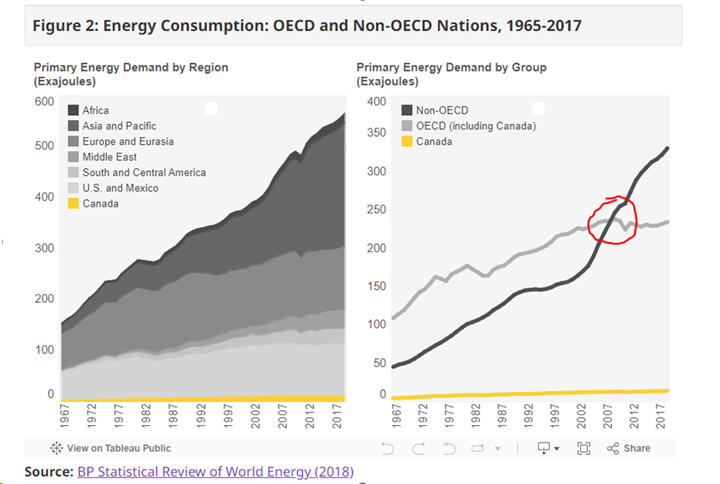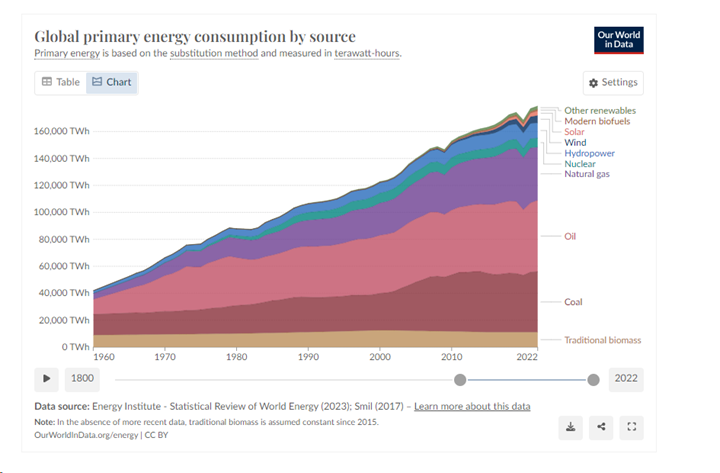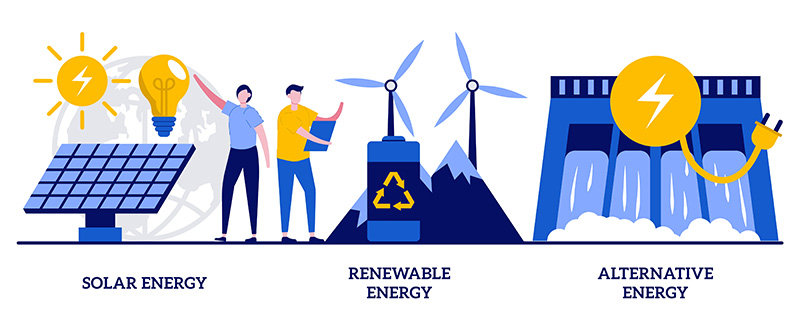Let There Be Light
Written by Paul Siluch
April 10th, 2024
I am a serial arsonist when it comes to the barbeque. I blacken everything I cook.
My friend Rob introduced me to a wireless meat thermometer called the Meater. It is a small probe you insert into a piece of meat, place it on the barbeque or in the oven, and then watch your cellphone. The Meater’s app tells you exactly when to turn or take the meat out.
You will never overcook anything again. It is a godsend for over-cookers like me.

The Meater got me thinking about devices and the electricity they consume. Rethinking. I wrote a piece several years ago about British Columbia’s giant new Site C dam and how quickly we could use up all the new power. I figured if everyone in B.C. used an electric toothbrush – a relatively new “must-have” device – we could devour up to 2% of the entire output of Site C annually.
And that is just toothbrushes. Don’t even ask about electric cars. I may have been off by a little or a lot, but it was an interesting exercise. Every time we add a new time-saving invention, we end up using more electricity.
Here is the U.S. timeline of electricity usage:
1930s 70% of households were electrified. Lighting and electric furnaces became widespread.
1940s US passed 50% of homes having hot water.
1950s Refrigerators, electric stoves, freezers.
1960s Most homes had air conditioning.
1970s Most homes had a dishwasher.

Wordldata: Energy consumption
Back to the Future
In 1967, Canada had 20 million people. My family’s house was heated by electric baseboards, we had no air conditioning, and no one thought much about the electricity bill.
Why? Because power was cheap.
In 1968, we acquired a new dishwasher. That added about 2% more power. Then a freezer added about 6% and a colour TV another 3%. This meant the household now consumed over 10% more power. Still, no one noticed. Power was cheap.
In 1978, Canada had 24 million people, an increase of 20% from 1967. We had three cars (the four kids were all teenagers), a house twice the size, and air conditioning. Our energy footprint had easily doubled but, again, we didn’t really notice.
I wasn’t paying the bills, anyway.
Fast-forward to 1997. Canada had 30 million people living in more households. I was now in my own house with a child, and so were my siblings with theirs. That’s five households now. And we had more stuff that my 1967 family didn’t have, including microwaves, hair dryers, and toaster ovens. This was also the beginning of the computer revolution, so home computers and bulky printers were taking over dens and bedrooms.
50% more people than in 1967. More power-guzzling gadgets.
By 2017, Canada had 36 million people. Most had smartphones, several TVs, electric toothbrushes, and even more gadgets. New homes today have lighting above the sink, under the sink, and even in the sink. We have heated floors in our bathrooms, fans in our kitchens, electric coloured fireplace displays, and automatic blinds for the windows.
Appliances did become far more efficient. Compared with 1980 models, clothes washers now use 70% less electricity. New LED lightbulbs use 80% less than incandescent bulbs and refrigerators 60% less. Per capita, the average Canadian uses just 9% more power today than she did in 1967 (Statistics Canada).
But there are twice as many Canadians now. And far more things that need plugging in.
Global Demand

The big jump in world energy use wasn’t caused by Canada, although we did our share. It was caused by people in emerging nations wanting what we had thirty years ago.
The graph above shows electricity demand in emerging nations surpassing developed nations around 2007. Canada’s usage roughly doubled from 1967 to 2017, but world demand rose almost four times.
What nation was most responsible? China. As it moved millions of people from the countryside into the cities and industrialized, its power needs skyrocketed. Electric stoves, hot water, air conditioning…they wanted what we had in the 1960s.
Vietnam and Indonesia followed and are now being joined by India and Nigeria. And you can’t forget Brazil, Mexico, and the rest of Africa.
Clean power advocates tell us not to worry. We can – and must - add green power sources to give us the power we need. Wind and solar are free, right?
While air and light are free, the machinery needed to harness them are not. Digging up copper and rare earth metals, and manufacturing polysilicon solar panels, is dirty business. Replacing fuels like coal is a desirable goal, as long as the new source is cleaner. Some studies say these aren’t.
Regardless, adding more electricity from solar and wind is not nearly enough.
Why? The dirty secret about power is that we need every source to power the world. More wind, solar, coal, oil, natural gas, and nuclear. Every source. Here is where the world gets its energy today. Almost half still comes from coal and oil:

There are several things that stand out:
- Even with all our power-saving measures, the world quadrupled its power usage from 1960 to 2015.
- Coal is being replaced in many countries, yet we still burned more last year than at any time in history.
- Wind and solar are helping, but they cannot keep up with growing electricity demand.
And it is about to get worse. Or better, depending on how you see progress.
Electric Everything
There are new “electricity sippers” everywhere you look. I discovered another one just yesterday – digital smart watches! Some of you will remember watches that needed winding every day even as most today have small batteries. But today’s smart watches need to be charged every few days, and they send data to servers that use even more power.
Sure, a watch is miniscule. But so are grains of sand. In the aggregate, sand adds up to mountains. These millions of tiny sips are becoming a torrent of new electricity usage.
The two fastest-growing users of electricity are electric cars and data centres.
Just to replace every gas-powered car with an electric one could require an almost 50% increase in electricity produced in the US (Department of Energy). We are years away from a complete switch, but we add tens of thousands of electric and hybrid cars every year.
And then there are data centres. These are the massive banks of servers and storage units where you store your saved email, pictures, and websites. They also include the enormous cryptocurrency “farms” where calculations are made to verify transactions.

Courtesy of Tesla, Inc.
And increasingly, these are where the new Artificial Intelligence – AI – brains do their thinking. If you have tried ChatGPT instead of a Google search, you will have contributed to the power surge now taking place.
“AI programs such as ChatGPT or Alphabet's Bard consume approximately ten times more energy than a regular Google search for similar queries.”
- Alex de Vries, Scientific American
New U.S. electricity demand from AI and cryptocurrencies could double by 2026, which is equivalent to the electricity consumption of Japan.
Where Will It Come From?
Our insatiable demand for electricity is not going to stop, or even slow down. This means we must get more from somewhere. Solar and wind will help, but they require the right conditions (light and variable temperature), plus enormous amounts of land.
The saviour could be nuclear energy. Once the pariah of the environmental movement, one tiny pellet of uranium packs the same energy as almost four barrels of oil, and with zero pollutants emitted. Yes, there are radioactive leftovers, but the amounts are surprisingly small. New reactor designs leave behind even less.
Canada has often been called the Saudi Arabia of uranium because our deposits are the richest on the planet. Our best uranium mines are ten times as rich as our best gold mines, when measured pound for pound.
The first breakthroughs will come from SMRs – Small Modular Reactors. These are micro-reactors capable of powering a small town or factory. One small reactor requires 1,000 times less land than a solar array and 10,000 times less land than a wind farm (Forbes).
And having the plant right next door is another bonus. The savings on transmission losses add up. It is estimated that up to 8% of electricity generated is lost due to heat and resistance in the wires during transmission.
Investment Winners
Most investors know that companies such as Microsoft, Amazon, and Alphabet (Google) are the immediate beneficiaries of the AI boom. However, there are also secondary beneficiaries.
Uranium producers - cannot supply enough ‘yellowcake’ toady to meet the growing need. The largest domestic producer, Cameco, now owns Westinghouse and so makes reactors as well as supplying the fuel to power them.
Copper producers – cannot supply enough copper for all the new wiring we will need, or the refrigerant tubes for countries wanting air conditioning.
Power producers – like Fortis and TC Energy will see increased demand on their grids. Companies supplying transformers and electrical equipment also stand to gain.
Few mining companies pay dividends or have been good investments. Our portfolios own Fortis and TC Energy, which do pay dividends, and have been good investments.
In short, it is possible that one of the best “back doors” to investing in the artificial intelligence boom could be through the power sector.





